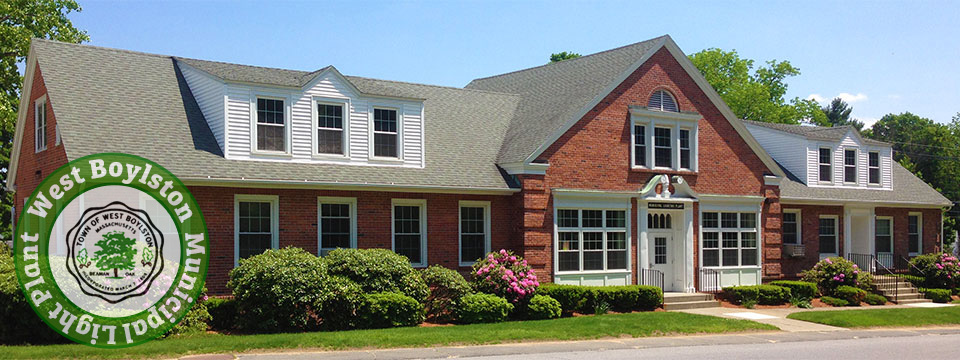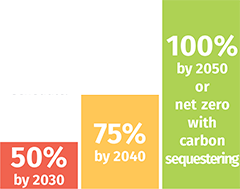Electrification in Massachusetts

WBMLP Headquarters
Reducing GHGs in the Commonwealth
Massachusetts Global Warming Solutions Act (GWSA) and Clean Energy and Climate Plan (CECP)
The Massachusetts Global Warming Solutions Act (GWSA) addresses our Commonwealth’s greenhouse gas emissions (GHG) and response to climate change across all sectors of the state’s economy. The GWSA requires net-zero emissions, or more simply put, a 100% reduction in GHG emissions by 2050 measured against the 1990 GHG emission baseline. Interim milestones in 2030 and 2040 are also set according to the following schedule:

Massachusetts total GHG emissions in 1990 were 94 MMTCO2e (metric million ton of carbon dioxide equivalent) and reductions in GHG emissions are expected from various sectors, including the “electricity or energy sector”, which WBMLP belongs to.
By the end of 2017, the most recent data available from MassDEP, Massachusetts total GHG emissions decreased by approximately 22%. The “electricity or energy sector” for electric utilities reduced GHG emissions by 57% from the 1990 baseline year and contributed to most of the state’s total emission reductions to date.
Emissions from the Transportation (light duty vehicles) and Building (residential and commercial) sectors are currently responsible for the largest amount of GHG emissions in Massachusetts and will be targeted for GHG reductions through electrification. Additionally, Massachusetts is considering adding a “Price on Carbon” to the unit price of gasoline, diesel, oil, natural gas, and propane to account for their respective GHG emissions. This “Price on carbon” will ultimately incentivize switching to more efficient and less GHG-emitting electricity delivered by your utility.
What is Electrification?
Switching from fossil fuels to electric transportation and electric building heating and cooling systems is called electrification. Electrification will increase the demand placed on our distribution system and significantly increase the amount of clean and renewable energy we must supply as we electrify these two sectors going forward. Overall electrification increases efficiency, reduces GHG emissions, and lowers operating costs for our customers.
Residential and Commercial Buildings Sector
Energy consumption by Residential and Commercial buildings was responsible for 27% of the state's GHG emissions in 2017. Oil and Natural Gas use for building heating is the largest contributor to GHG emissions in this sector, and is followed using these fuels for hot water heating, cooking, and other chores such as drying clothes. Electrification in buildings replaces fossil-fueled equipment for Space Heating/Cooling and hot water, with Heat Pump technologies that operate at significantly higher efficiencies and lower operating costs in West Boylston.
Air-source Heat Pumps, sometimes called Mini-splits, are the dominant technology for Residential Heating and Cooling applications. Ground-source systems are also effective, especially in new construction.
For Commercial buildings, Air-source Heat pumps, Ground-source systems and Variant Refrigerant Flow systems offer great opportunities for electrification. Heat Pump Water Heaters are a great electrification option for water heating in both residential and commercial buildings.
Transportation (light duty Cars and Trucks)
The Transportation sector emitted 42% of the state’s GHG emissions in 2017 and accounts for the largest portion of the Commonwealth’s emissions.
Light-duty vehicles (LDVs), or personal Cars and light Trucks, are responsible for 58% of this sector's GHG emissions. Replacing all petroleum-based LDVs with battery electric vehicles is required to achieve net-zero statewide emissions by 2050.